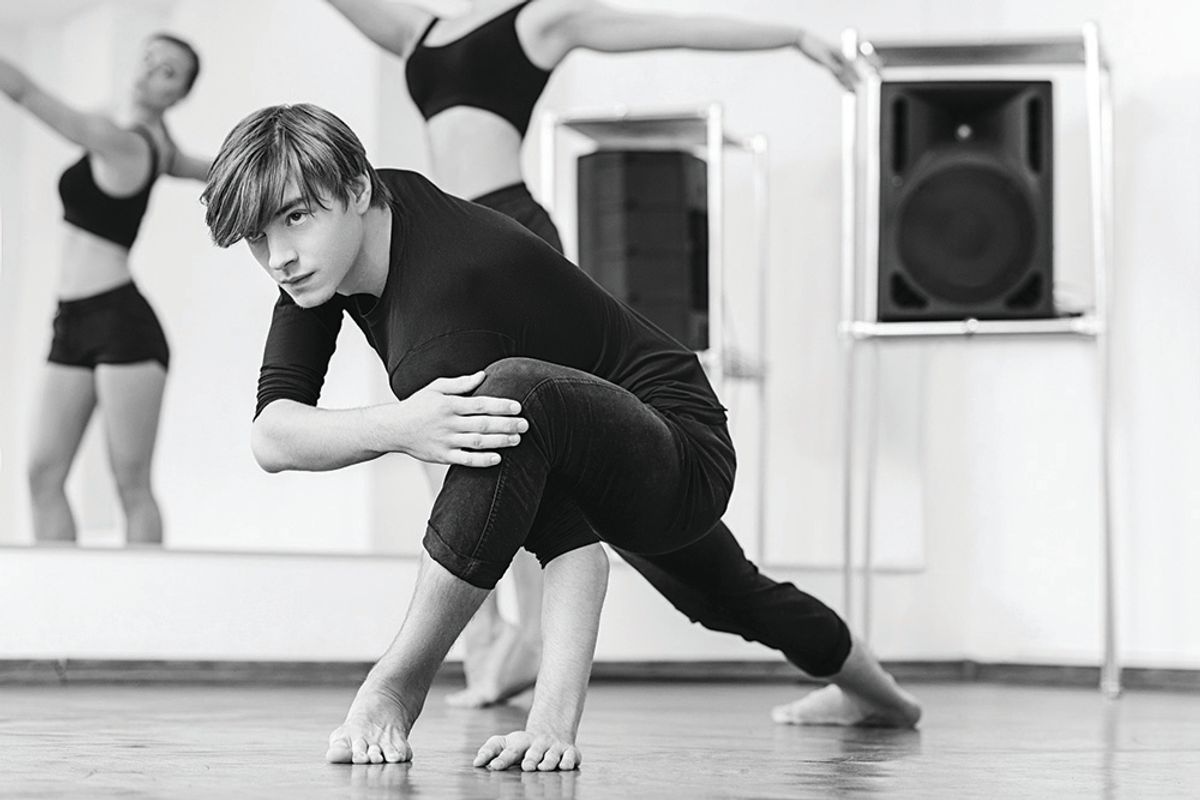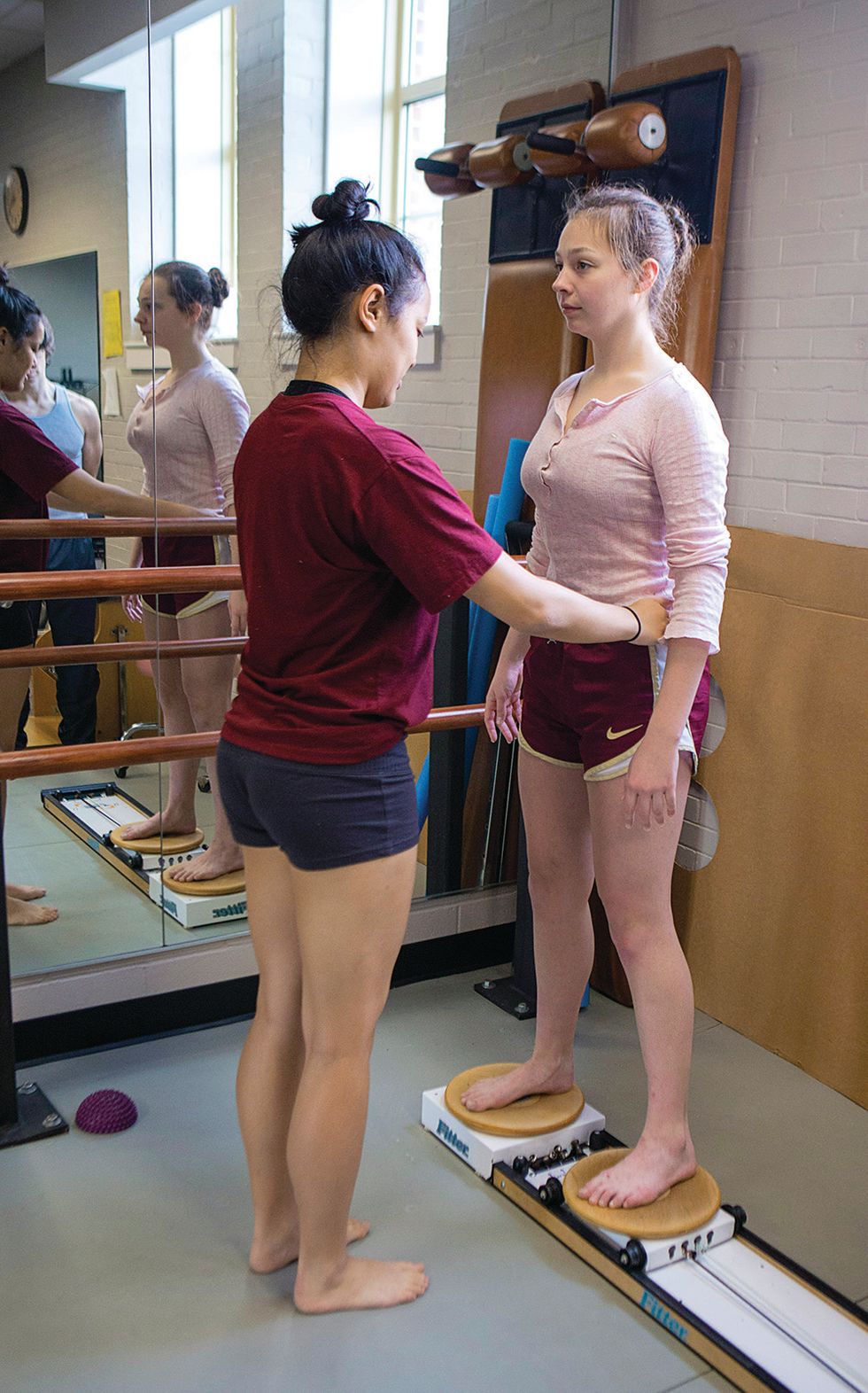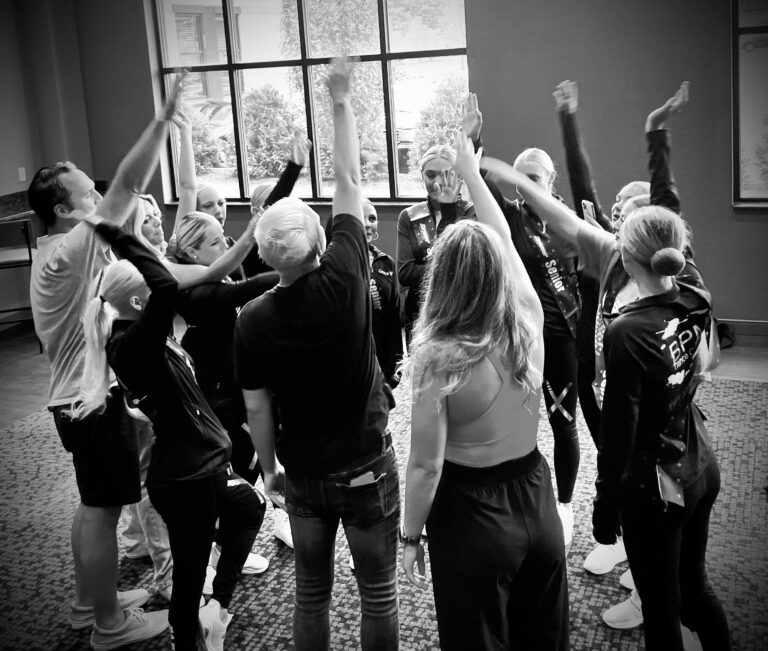
It’s the middle of the semester and two dancers are sitting out of class, you’re worried about one student’s mental health and another has developed an eating disorder. Sound familiar? College can be a tumultuous time. To help address the additional demands of being a dance major, some schools have found strategies for enhancing wellness and integrating health services into their departments.
These efforts vary vastly. While most dance programs at least offer courses in anatomy, kinesiology, somatics, conditioning or dance science, a few programs have highly integrated health and dance collaborations, while others struggle to integrate even basic principles of current research into their dance curriculum.
Though little research has been done on the impact of wellness programs for college dancers, experience suggests that teaching students to care for themselves helps them stay healthier, reduces the impact of injury and improves performance. What’s more, these initiatives can fulfill an additional educational aim: helping students grow into fully integrated, artistic beings. Here, three educators from different institutions and backgrounds share their experiences of finding effective ways to enhance health and well-being in a college dance program.
Getting started
To create a wellness program, you’d ideally first evaluate the specific needs of your program. Then, you’d design interventions and initiatives, acquire funds and hire a staff. All along the way, you’d collect data and assess the success of the program before making changes and adjustments. Realistically, time and financial limitations often restrict such linear progress in dance departments.
Professor Tom Welsh has established one of the most comprehensive dancer-health programs in the country at Florida State University. Over his 25-year tenure, FSU has grown to offer physical therapy and conditioning for dancers, preseason screenings, a Pilates certification and numerous courses in dance science. Welsh developed all this in response to the immediate needs of students and the resources available. “We didn’t sit down in an armchair and design this,” he explains. “We just kept asking the question: What do our dancers need now?”
If you’re crafting a program from scratch, it might look quite different, but to begin, Welsh suggests drawing from a basic principle of rehabilitative therapy: “Do just a little more today than you did perfectly yesterday.”
The issues students experience will inform the programs you create
Are dancers frequently injured? Showing signs of burnout, feeling overwhelmed and depressed? Struggling to maintain a healthy weight, or not getting along with one another?
If you’re seeing a lot of injured students, you might want to start a pre-semester screening, increase cross-training offerings or form a relationship with a certified athletic trainer (ATC) or physical therapist (PT). If students are exhausted and unhappy, you might need to change the organization of your program and find ways to reduce overscheduling while forming an alliance with a mental health professional.
A meaningful needs assessment can be time-consuming and may benefit from an outside eye. Sarah Wilcoxon studied with Welsh while earning her MFA from FSU. With that experience, she was hired as assistant professor at Missouri State University and tasked with helping the theater and dance department create wellness programming. But giving this goal the attention it deserved while simultaneously fulfilling the duties of her course load, choreography assignments and advising responsibilities proved impractical. Fortunately, her supportive department agreed to bring in consultants who spent two weeks observing how the department functioned, talking to students, and meeting with other departments and the outside community.
At Cornish College of the Arts, a small institution with a substantial dance tradition, Kitty Daniels had to learn to enhance wellness on a tight budget when she was chair of the dance department. Still, she was able to bring in an outside expert to assess her program: Karen Clippinger, kinesiology textbook author and early adopter of dance science. Unable to pay for Clippinger’s travel, Daniels managed to scrape together a bit of miscellaneous funding for the project and coordinated with Clippinger’s already existing plans to be in Seattle.
Identify compatible needs in other departments
It’s rare for a school to have a dedicated health professional on full-time dance faculty. More often, medical professionals such as PTs or ATCs are dual appointments with another department. Alternatively, a professor employed by a department outside of dance (in applied sciences like exercise physiology, for example) may have a strong professional or research interest in dance, and therefore want to work collaboratively with your department.
Frequently, schools have a faculty member with dance science expertise. These professionals typically teach anatomy and kinesiology, conditioning and dance. It’s also common for university dance educators to have certifications in supportive fields like personal training, Pilates or yoga. Consider, though, that while these professionals can enhance the well-being of students in a variety of ways, only health-care providers are qualified to diagnose or treat injuries. If that’s your aim, you’ll likely need to look outside your department.
The two consultants who visited MSU, for example, found compatible needs within the athletic training department. They created a graduate assistant post that allows an already licensed athletic trainer to treat dancers 20 hours a week. This arrangement symbiotically benefits the athletic training department by attracting master’s students with an interest in performing-arts medicine.
Modeling good practices
Overwhelmingly, dance wellness initiatives focus on dancers’ physical bodies, but lifestyle imbalances and mental health issues are pressing concerns for many college students.
When Wilcoxon started at MSU, she sustained a serious back injury that she now recognizes was due in part to stress and lack of time management—she sacrificed her own body maintenance for the demands of her job. Since that injury, she has come to appreciate the importance of setting boundaries, explaining to students when she’s off-line and will not respond immediately to e-mail, for example. She also outlines her schedule at the start of each semester, delineating time for meals and self-care like physical therapy sessions. She posts this schedule on her office door so that students and other faculty can see what is realistic to expect of her. “No one will applaud you for setting boundaries,” she says, but she finds these strategies keep her healthier and therefore help her do her job better. What’s more, these actions model good planning, time management and self-care practices for a young population that’s still learning these critical habits.
Managing resistance
Even with the best intentions, it’s possible that your efforts to enhance dancer health will be faced by some reluctance from students and faculty alike. It can be hard for people to change their habits. Some people may express their distrust of new initiatives while others may simply ignore new policies. However, when more students are happily participating in mid-semester classes and dancing better than ever, naysayers will inevitably comply and the culture of the program gradually shifts.
Simple changes can be effective
Creating these programs requires a bit of ingenuity and what Welsh calls “persistent patience,” but the outcomes are worth it, and enhancing student wellness doesn’t have to start with an enormous leap. For example, several schools have found ways to apply basic elements of periodization (scheduling intense training periods and rest periods to optimize performance). FSU achieves this at the start of the fall semester by simply substituting part of dance classes for basic conditioning classes to help students build up their strength and stamina after the summer break. As with injury prevention and management, small adjustments can be the catalyst for larger positive changes.




